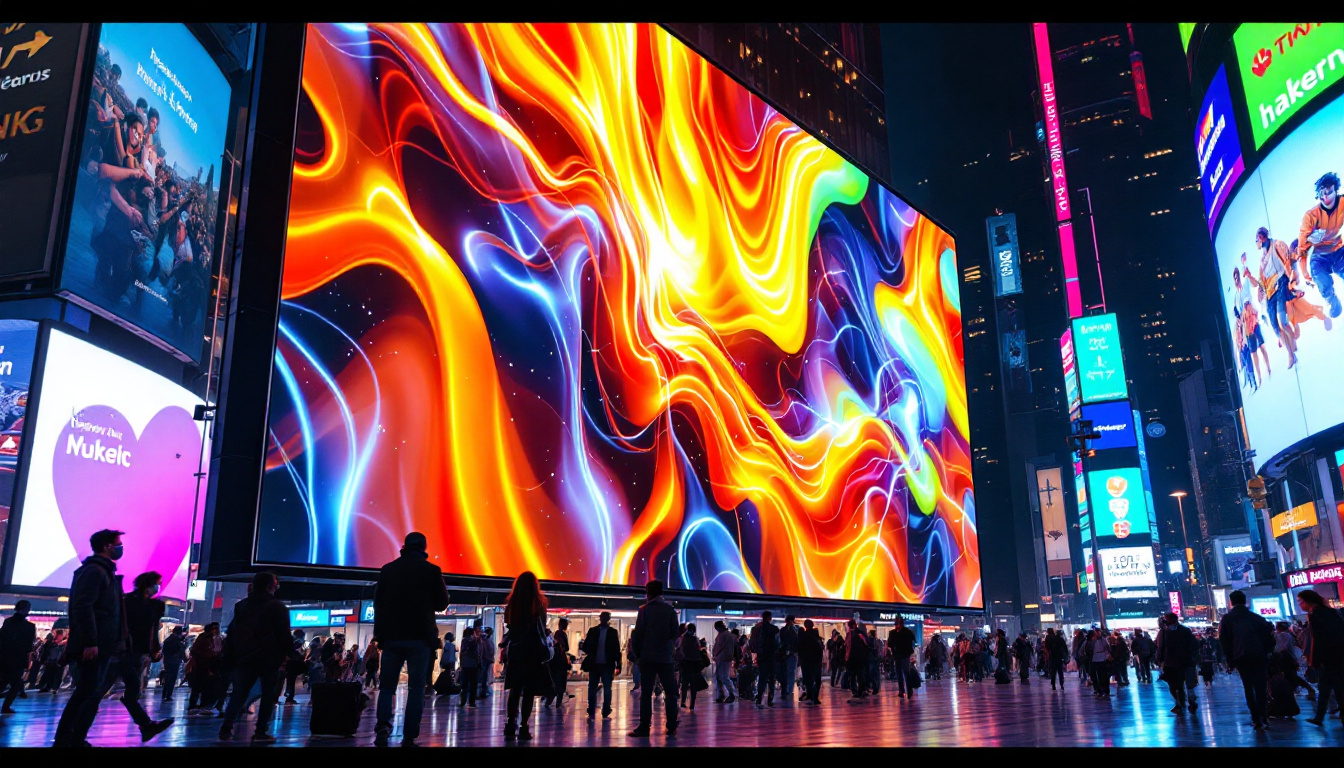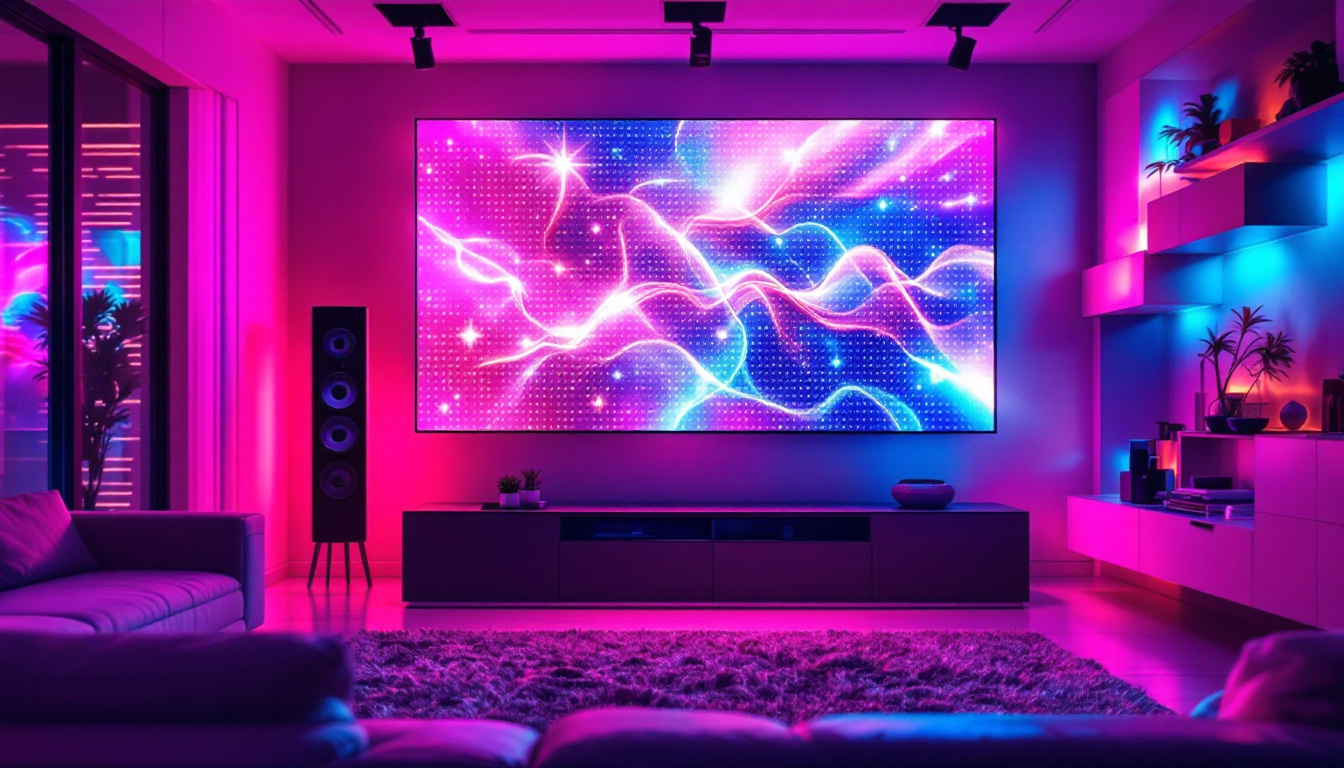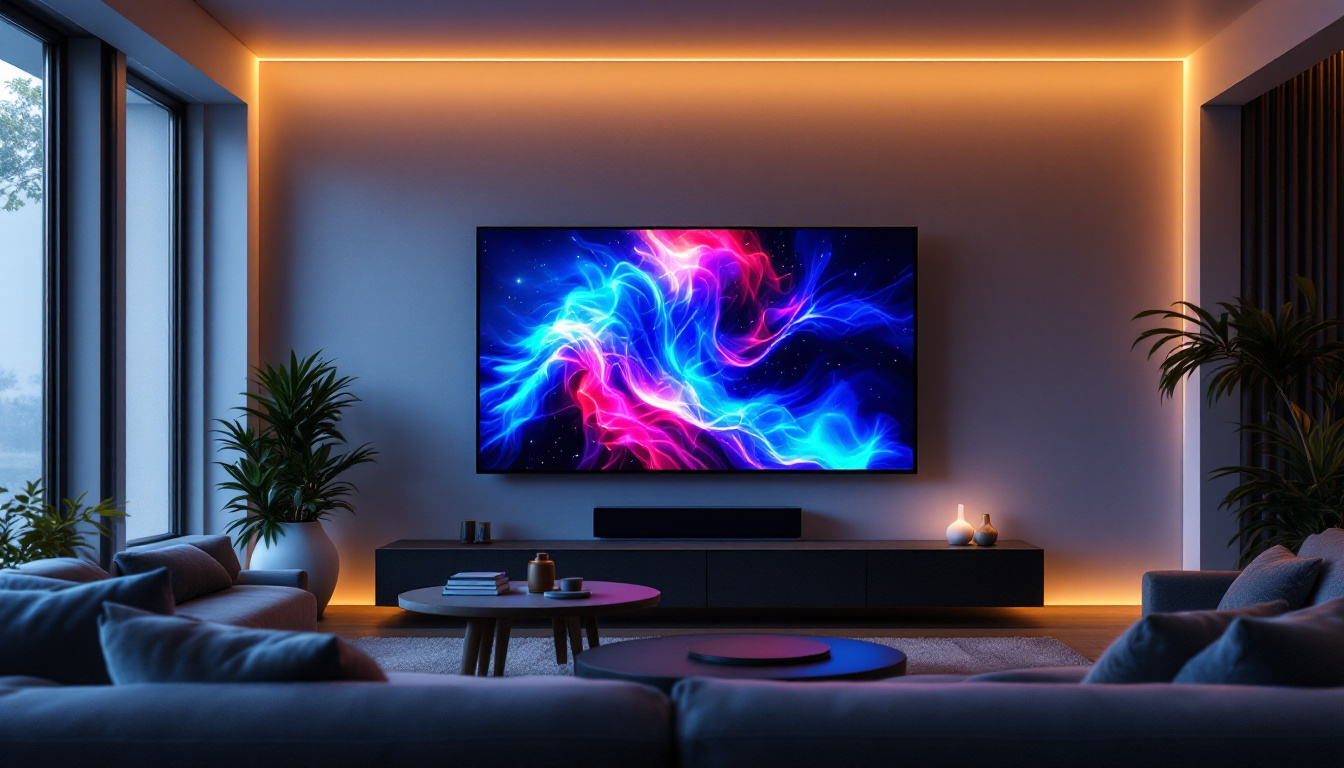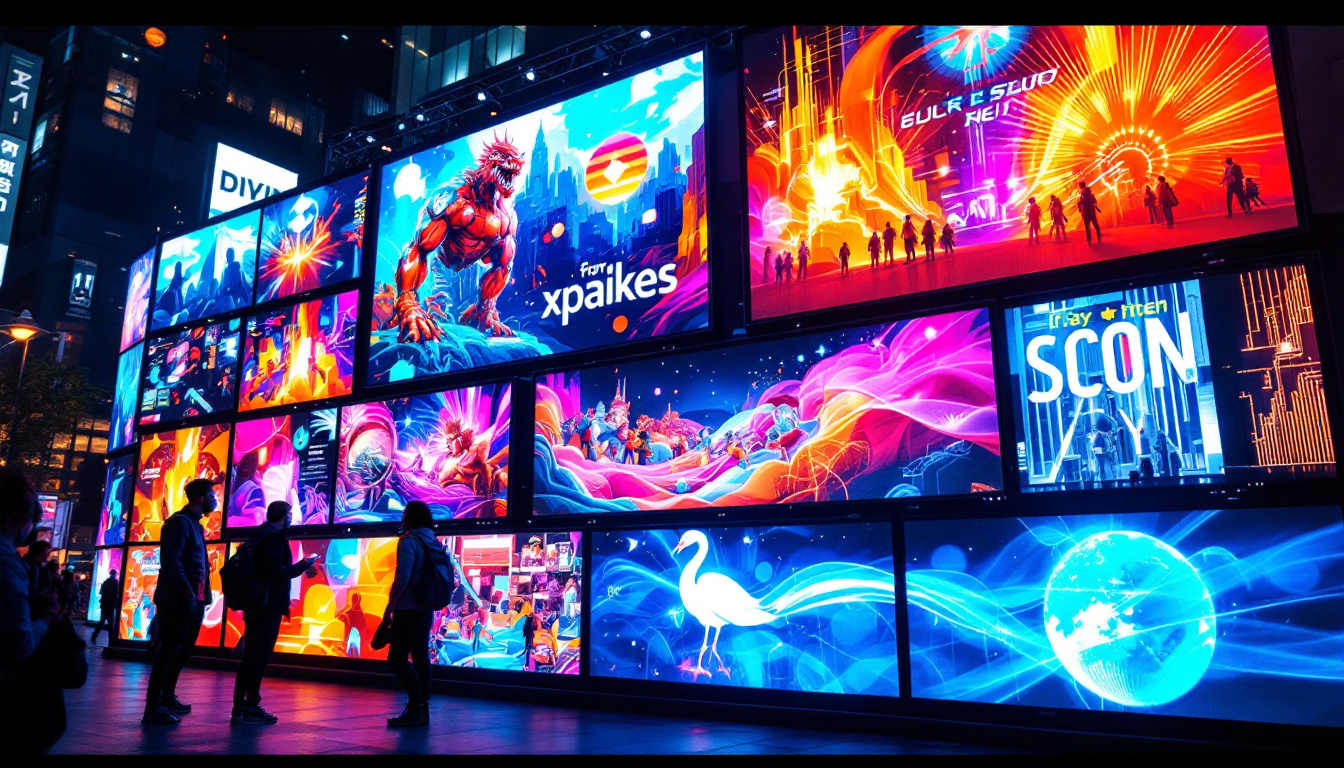Large LCD: LED Display Explained
The world of display technology has evolved significantly over the past few decades. Among the various types of displays available today, large LCD (Liquid Crystal Display) screens with LED (Light Emitting Diode) backlighting have gained immense popularity. These displays are widely used in televisions, computer monitors, and digital signage due to their vibrant colors, energy efficiency, and slim design. This article aims to provide a comprehensive understanding of large LCD LED displays, exploring their technology, advantages, and applications.
Understanding LCD Technology
Liquid Crystal Display technology is based on the manipulation of light to create images. Unlike traditional cathode ray tube (CRT) displays, LCDs do not emit light directly. Instead, they use a combination of liquid crystals and a backlight to produce images. The liquid crystals are sandwiched between two layers of glass, and when an electric current passes through them, they align in such a way that they can either block or allow light to pass through.
The Role of Backlighting
The backlighting in an LCD screen is crucial, as it provides the necessary illumination for the display. In large LCD screens, LED backlighting has become the standard. LEDs are more efficient than traditional fluorescent lights, allowing for thinner screens and better energy consumption. There are two main types of LED backlighting: edge-lit and direct-lit.
Edge-lit displays have LEDs positioned around the edges of the screen, which helps to create a slim profile. However, this can lead to uneven brightness across the display. On the other hand, direct-lit displays have LEDs placed directly behind the screen, providing more uniform brightness and better contrast, albeit at the cost of thickness. Additionally, advancements in backlighting technology, such as local dimming, enhance the viewing experience by allowing specific areas of the screen to dim or brighten independently, thus improving contrast ratios and deepening blacks.
Liquid Crystals in Action
Liquid crystals are the heart of LCD technology. These substances have properties between those of liquids and solid crystals. When no electric current is applied, the liquid crystals are randomly oriented, blocking light. However, when electricity is applied, they align in a way that allows varying amounts of light to pass through, creating the desired image. This process is what allows LCDs to produce sharp and vibrant colors.
Moreover, the advancements in liquid crystal formulations have led to the development of various types of LCDs, such as IPS (In-Plane Switching) and TN (Twisted Nematic) panels. IPS panels are known for their superior color accuracy and wider viewing angles, making them ideal for professional graphic design and photography. In contrast, TN panels are favored in gaming environments due to their faster response times, although they may sacrifice some color fidelity and viewing angles. As technology continues to evolve, the integration of quantum dots and other innovations promises to further enhance the performance and capabilities of LCD displays, pushing the boundaries of what is possible in visual technology.
Advantages of Large LCD LED Displays
Large LCD LED displays offer numerous advantages that make them a preferred choice for consumers and businesses alike. Understanding these benefits can help in making informed decisions when selecting a display technology.
Energy Efficiency
One of the most significant advantages of LED backlighting is its energy efficiency. Compared to traditional LCDs with fluorescent backlighting, LED displays consume considerably less power. This efficiency not only reduces electricity bills but also contributes to a smaller carbon footprint, making them a more environmentally friendly option. Furthermore, many LED displays come with energy-saving modes that automatically adjust brightness based on ambient light conditions, further enhancing their energy-saving capabilities. This feature is particularly beneficial in settings where displays are used for extended periods, such as in schools or offices, leading to substantial cost savings over time.
Improved Picture Quality
Large LCD LED displays are known for their superior picture quality. The use of LED backlighting enhances brightness and contrast, resulting in more vibrant colors and deeper blacks. This improvement is especially noticeable in bright environments, where traditional displays may struggle to maintain clarity. Additionally, advancements in technology, such as local dimming, allow for even greater control over brightness levels, enhancing the overall viewing experience. The incorporation of high dynamic range (HDR) technology in many modern LED displays further elevates the visual experience by providing a wider range of colors and improved detail in both the shadows and highlights, making movies and games more immersive than ever.
Thin and Lightweight Design
The slim profile of large LCD LED displays makes them an attractive option for various applications. Their lightweight design allows for easy installation and mounting, making them ideal for both residential and commercial settings. Whether it’s a large television in a living room or a digital signage display in a retail environment, the sleek design of these displays enhances aesthetics without compromising functionality. Additionally, the versatility of large LCD LED displays means they can be used in a variety of configurations, such as video walls for events or exhibitions, allowing for creative and impactful presentations. Their adaptability makes them a popular choice among businesses looking to create engaging customer experiences, as they can easily be integrated into existing setups or used as standalone features to draw attention.
Applications of Large LCD LED Displays
The versatility of large LCD LED displays has led to their widespread adoption across various sectors. From entertainment to education, these displays serve numerous purposes, each benefiting from the unique features of the technology.
Home Entertainment
In the realm of home entertainment, large LCD LED displays have become the standard for televisions. With their ability to deliver stunning picture quality and vibrant colors, they enhance the viewing experience for movies, sports, and gaming. Many models also come equipped with smart technology, allowing users to access streaming services and other online content directly from their screens.
Commercial Use
Businesses utilize large LCD LED displays for advertising, presentations, and information dissemination. Digital signage has become a powerful marketing tool, allowing companies to engage customers with dynamic content. Retailers, airports, and corporate offices have adopted these displays to convey messages effectively and attract attention.
Education and Training
In educational settings, large LCD LED displays facilitate interactive learning and presentations. They provide educators with a platform to display multimedia content, making lessons more engaging. Furthermore, their ability to connect to various devices allows for seamless integration of technology in the classroom, enhancing the overall learning experience.
Comparing LCD LED Displays with Other Technologies
While large LCD LED displays are popular, they are not the only display technology available. Understanding how they compare to other options can provide valuable insights for potential buyers.
LCD vs. OLED
Organic Light Emitting Diode (OLED) displays are often touted for their superior picture quality, particularly in terms of contrast and color accuracy. Unlike LCDs, OLEDs do not require a backlight, as each pixel emits its own light. This results in true blacks and a wider viewing angle. However, OLED displays can be more expensive and may suffer from burn-in issues, where static images can permanently affect the screen.
LCD vs. Plasma
Plasma displays were once a popular choice for large screens, particularly for home theaters. They offered excellent color reproduction and viewing angles. However, they are heavier, consume more power, and can suffer from screen burn-in. As technology has advanced, LCD LED displays have largely replaced plasma screens in the market due to their advantages in energy efficiency and picture quality.
Future Trends in Large LCD LED Displays
The display technology landscape is continuously evolving, with innovations aimed at enhancing performance and user experience. Large LCD LED displays are no exception, and several trends are shaping their future.
Higher Resolutions
As content quality continues to improve, the demand for higher resolutions is on the rise. 4K and 8K resolutions are becoming more common in large LCD LED displays, providing even greater clarity and detail. This trend is particularly significant for large screens, where the difference in resolution can greatly impact the viewing experience.
Smart Features and Connectivity
Smart technology integration is another trend influencing large LCD LED displays. Many new models come equipped with built-in streaming capabilities, voice control, and connectivity options. This allows users to access a wide range of content and control their displays with ease. As the Internet of Things (IoT) continues to expand, the connectivity features of these displays are likely to become even more sophisticated.
Enhanced Color Technologies
Advancements in color technologies, such as Quantum Dot and HDR (High Dynamic Range), are also making their way into large LCD LED displays. These technologies enhance color accuracy and contrast, resulting in a more immersive viewing experience. As manufacturers continue to innovate, consumers can expect even more impressive visual performance from their displays.
Conclusion
Large LCD LED displays have revolutionized the way we experience visual content, offering a combination of energy efficiency, superior picture quality, and versatility. Their applications span various sectors, from home entertainment to commercial use, making them an essential part of modern life. As technology continues to advance, the future of large LCD LED displays looks promising, with innovations that will further enhance their capabilities and user experience.
Whether for personal enjoyment or professional use, understanding the intricacies of large LCD LED displays can empower consumers and businesses to make informed choices. As the market evolves, staying informed about the latest trends and technologies will ensure that users can fully leverage the benefits of this remarkable display technology.
Discover LumenMatrix’s Innovative LED Display Solutions
Ready to elevate your visual experience with the latest in LED display technology? Look no further than LumenMatrix, a pioneer in crafting LED display modules that transform any space into a dynamic environment. From vibrant Indoor and Outdoor LED Wall Displays to specialized solutions like Vehicle, Sports, and Floor LED Displays, LumenMatrix offers a comprehensive range of products designed to captivate and engage. Embrace the future of visual communication with our Custom, All-in-One, and LED Transparent Displays, each tailored to deliver your message with unparalleled impact. Check out LumenMatrix LED Display Solutions today and see how we can help you create unforgettable visual experiences.































